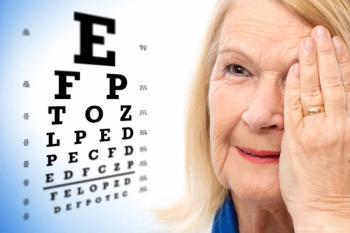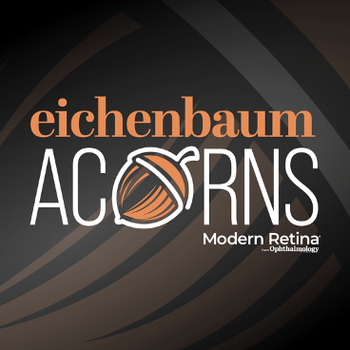
What’s in the wet AMD pipeline
With no “cure,” neovascular age-related macular degeneration (or wet AMD) remains a key disease state for numerous pharmaceutical companies.
Here is a brief overview of where some of the investigations stand, along with the most recent information on clinical trials (all information is from company information):
Aerpio Therapeutics is developing ARP-1536 is a humanized monoclonal antibody that targets the extracellular domain of vascular endothelial protein tyrosine phosphatase (VE-PTP). Tie2 activity is downregulated by two mechanisms: deactivation of active Tie2 by VE-PTP and binding of the non-activating ligand angiopoietin-2 (Ang-2). According to the company, Based on the long half-life of monoclonal antibodies, ARP-1536 has the potential to be administered on a monthly to quarterly basis.
Graybug announced positive top line results for its ADAGIO study, a phase I/IIa study of intravitreal GB-102 (sunitinib malate). According to the company, GB-102 was well-tolerated with no dose limiting toxicities, drug-related serious adverse events or inflammation.
Further, 88% and 68% percent of evaluable patients were maintained only on a single dose of GB-102 at 3- and 6-months, respectively. GB-102 consists of microparticles made from poly-lactic-co-glycolic acid (PLGA) and methoxy-polyethylene glycol (mPEG)-PLGA. The mPEG component is a proprietary hydrophilic, biocompatible surface treatment designed to eliminate inflammation typically associated with ocular administration of PLGA. The surface treatment also facilitates microparticle aggregation upon IVT injection to form an implant-like depot in the inferior vitreous. After IVT injection, the microparticles gradually release sunitinib malate and biodegrade into lactic and glycolic acid, which are naturally cleared from the body.
The ADAGIO clinical trial was an open-label, single dose study that enrolled 32 patients from 8 centers located in the United States. Patients enrolled in the study were previously treated with at least three prior intravitreal injections of any anti-VEGF agent current standard of care treatment (aflibercept, bevacizumab, or ranibizumab), and had to demonstrate a response to anti-VEGF treatment. Patients enrolled in the study received a single intravitreal dose of GB-102 (0.25, 0.5, 1, or 2 mg) in escalating dose cohorts with eight patients in each cohort. Patients averaged 59.3 days from their last anti-VEGF treatment to their first and only GB-102 treatment. Patients were followed monthly for 8 consecutive months.
Novartis is developing brolucizumab, a humanized single-chain antibody fragment that inhibits all isoforms of VEGF-A.
A majority of patients in the brolucizumab arm were able to achieve the clinical endpoints on an every-12-week dosing interval following the loading phase through week 48: 57% in HAWK and 52% in HARRIER. In these two phase III studies, patients received 3 monthly loading doses of the assigned treatment, followed by 12-week dosing intervals for patients receiving brolucizumab, with an 8-week dosing option depending on disease activity.
At week 16, relative to aflibercept, 35% fewer brolucizumab 6 mg patients showed presence of intraretinal fluid and/or subretinal fluid in HAWK, and 33% fewer in HARRIER (p < 0.0001 for both). Brolucizumab 6 mg patients demonstrated superior reductions in central subfield thickness (CST). Significantly improved CST reductions were evident at week 16 (p = 0.0016 in HAWK and p < 0.0001 in HARRIER) and at week 48 (p = 0.0023 and p < 0.0001, respectively).
Ophthea’s OPT-302 is a soluble form of human VEGF receptor-3 that blocks VEGF-C and VEGF-D. It is being evaluated for use in combination with an anti-VEGF-A agent. VEGF-C and VEGF-D promote blood and lymphatic vessel development. VEGF-C also causes vessels to leak, the company noted. OPT-302 blocks the activity of VEGF-C and VEGF-D and is being developed for the treatment of wet AMD and DME. The company plans to enroll 351 patients with wet AMD in a randomized, controlled phase IIb clinical trial (OPT-302-1002) of OPT-302 in combination with ranibizumab at sites in the US, Europe (United Kingdom, France, Poland, Hungary, Spain, Latvia, Italy and Czech Republic) and Israel.
PanOptica is developing PAN-90806, a novel, topically applied, once daily eye drop for the treatment of wet AMD and other neovascular eye diseases. PAN-90806 is a small molecule that blocks activation of the VEGF receptor 2 through inhibition of the receptor’s tyrosine kinase activity. Results from a study enrolling patients with treatment-naïve wet AMD are expected in 2019.
Regenxbio is developing RGX-314, a gene therapy based on the company’s proprietary NAV Technology Platform. RGX-314 is being developed as a one-time subretinal treatment for wet AMD. It includes the NAV AAV8 vector encoding an antibody fragment which inhibits VEGF, modifying the pathway for formation of new leaky blood vessels which lead to retinal fluid accumulation and vision loss.
In preclinical animal models with conditions similar to macular degeneration, significant and dose-dependent reduction of blood vessel growth and prevention of disease progression was observed after a single subretinal dose of RGX-314.
RGX-314 was well-tolerated and showed dose-dependent protein expression levels and dose-dependent reductions in anti-VEGF injections, along with maintenance of central retinal thickness and vision in a phase 1 study. Of the subjects treated at the 6 x 10^10 (Cohort 3) genome copies (GC)/eye dose, 50% were free of anti-VEGF injections at 6 months. RGX-314 protein expression continues to be detected in all subjects in Cohort 3.
At six months, Cohort 3 subjects demonstrated evidence of sustained RGX-314 protein expression levels, as measured from aqueous samples by electrochemiluminescence immunoassay (ECL) after administration of RGX-314. A total of 24 subjects have now been dosed in this early phase trial. The company plans to initiate a phase II clinical trial for RGX-314 in 2019, and to provide further information regarding the initial assessments of protein expression levels from Cohort 4, anticipated phase II clinical trial design and overall plans for the RGX-314 clinical program in early 2019.
Roche/Genentech is developing faricimab, a bi-specific drug that simultaneously inhibits VEGF-A and Angiopoietin-2. In wet AMD, Ang-2 works synergistically with VEGF to drive pathologic blood vessel permeability and destabilization, abnormal blood vessel growth and fluid leakage, which contribute to vision loss.
Ang-2 also plays an important role in multiple aspects of inflammation in wet AMD. Faricimab is being evaluated in phase III studies as a treatment for diabetic macular edema (DME) and wet AMD. STAIRWAY is a 52 week study that assessed two extended dosing regimens of faricimab 6.0mg given every 16 weeks or every 12 weeks, compared to ranibizumab 0.5 mg every 4 weeks. At week 24 (3 months after the last of four loading doses), patients randomized to faricimab every 16 weeks switched to 12-week dosing if they were shown to have active disease, per pre-defined criteria.
At week 24, 65% (n = 36/55) of people treated with faricimab had no active disease, highlighting the potential of 16 week dosing in nearly two-thirds of patients. Initial vision gains, as measured by BCVA, were fully maintained through to week 52 with both 16 and 12 week dosing regimens. People treated with faricimab dosed every 16 weeks experienced a mean improvement of 11.4 letters from baseline, compared to 10.1 letters in patients treated with faricimab dosed every 12 weeks, and 9.6 letters in patients treated with 0.5 mg ranibizumab dosed every four weeks.
The three treatment regimens were similar in both the proportion of patients gaining more than 15 letters and avoiding a loss of more than 15 letters. Comparable reductions in central retina thickness were also observed in people treated with both dosing intervals of faricimab and those treated with ranibizumab. In STAIRWAY, the rates of ocular and systemic adverse events observed with faricimab were similar to the rates observed with ranibizumab. No new safety signals were observed. The overall safety profile of faricimab appears consistent with the safety profile reported in patients with wet AMD who receive intravitreal anti-VEGF therapies.
Roche/Genentech is also developing the Port Delivery System with ranibizumab (PDS) in patients with wet AMD. Topline results presented in 2018 showed the majority of PDS patients – including approximately 80% of patients in the high-dose PDS group – went 6 months or longer between the implantation and the first required refill of the device.
Importantly, patients in the high-dose PDS group achieved similar visual outcomes as 0.5 mg ranibizumab dosed every four weeks. Based on data from the phase II Ladder program, the pivotal phase III Archway clinical trial and the Portal open label extension study were initiated in September 2018.
These studies will evaluate the efficacy and safety of PDS with ranibizumab 100 mg/ml concentration in patients with wet AMD at a fixed dosing interval of 24 weeks.
Newsletter
Keep your retina practice on the forefront—subscribe for expert analysis and emerging trends in retinal disease management.












































